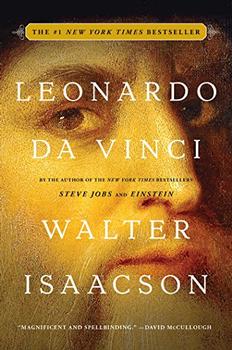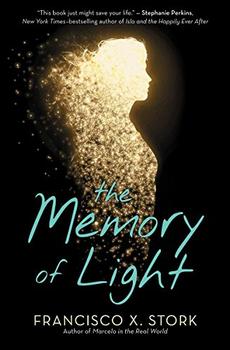At BookBrowse, we believe that books are not an end in themselves but a jumping off point to new avenues of thought and discovery. This is why, every time we review one we also explore a related topic. Here is one such "beyond the book" article by Rose Rankin, originally titled "The Education Revolution" and written in conjunction with her review of Walter Isaacson's Leonardo da Vinci:
 The term "Renaissance man" means a polymath, or someone who excels at many fields. Few people earned that moniker as brilliantly as Leonardo da Vinci, who actually lived during the height of the Italian Renaissance. Making his accomplishments even more remarkable is the fact that he didn't receive much in the way of a formal education. Leonardo was rightfully proud that he didn't "accept dusty Scholasticism or the medieval dogmas that had accumulated since the decline of classical science and original thinking," as Walter Isaacson explains in his biography of the Renaissance master.
The term "Renaissance man" means a polymath, or someone who excels at many fields. Few people earned that moniker as brilliantly as Leonardo da Vinci, who actually lived during the height of the Italian Renaissance. Making his accomplishments even more remarkable is the fact that he didn't receive much in the way of a formal education. Leonardo was rightfully proud that he didn't "accept dusty Scholasticism or the medieval dogmas that had accumulated since the decline of classical science and original thinking," as Walter Isaacson explains in his biography of the Renaissance master.
But while Leonardo himself was working and discovering, education in the Renaissance was undergoing important changes, ultimately setting the stage for the study of liberal arts that we still recognize today. The program of Scholasticism, a method of study that dominated the Middle Ages, was being swept aside as European societies re-discovered works by ancient Greeks and Romans. During the fifteenth and sixteenth centuries in Italy, this evolved into the studia humanitatis, the educational program of the Renaissance.
The studia humanitatis consisted of grammar, rhetoric, poetry, history, and moral philosophy based on the reading of classical Greek and Latin authors. In the 1400s both the texts and the purpose of education changed. Writers whose works had been lost to Europeans for centuries were re-discovered, and education became a means to self-improvement. The development of humanism and its emphasis on mankind rather than theology prepared the ground for this shift in the larger purpose of education.
The Story of Arthur Truluv by Elizabeth Berg is by many accounts a "feel-good read" – a book that readers say makes them feel upbeat after having finished it. But that raises the question: Can a book truly influence your mood? It turns out that scientists have long speculated that reading can, in fact, have an impact on one's mental health, and a practice called "bibliotherapy" has arisen around this belief.
Every time BookBrowse reviews a book we go "beyond the book" to explore a related topic, such as this article originally written as background to The Last Mrs Parrish, a debut novel written by sisters Lynne Constantine and Valerie Constantine:
 According to their website, "Liv Constantine is the pen name of sisters Lynne Constantine and Valerie Constantine." Hearing this piqued my curiosity regarding, not simply literary collaborations (there are tons of those), but writers who collaborate and then publish their fictional works under a single pseudonym--and in particular writers who are related to each other.
According to their website, "Liv Constantine is the pen name of sisters Lynne Constantine and Valerie Constantine." Hearing this piqued my curiosity regarding, not simply literary collaborations (there are tons of those), but writers who collaborate and then publish their fictional works under a single pseudonym--and in particular writers who are related to each other.
Here are some famous related co-authors who write under a single pen name:
For those who grew up in the digital age, typewriters may seem all but extinct, a relic of a past era. But at one time, typewriters were as revolutionary and cutting edge as the latest laptop technology. The earliest progenitors of the typewriter believed they were creating a writing device only for the blind. They didn't foresee typewriters being needed by those who could see; after all, what were pens for?
In literary terms, the distinction between a romance and a love story is arguably subjective and open for interpretation--perhaps rooted in literary snobbery--but as someone who appreciates both genres, this is how I discern the two.
 According to Suicide Awareness Voices of Education (SAVE), suicide is the second leading cause of death in people 15-24 years of age, and ranks tenth when considering all ages. The Centers for Disease Control and Prevention estimates that in the United States, eight percent of all people over the age of twelve suffer from depression in any two-week period. Although females are more likely to experience a major bout, males' related suicide attempts are more likely to end in death.
According to Suicide Awareness Voices of Education (SAVE), suicide is the second leading cause of death in people 15-24 years of age, and ranks tenth when considering all ages. The Centers for Disease Control and Prevention estimates that in the United States, eight percent of all people over the age of twelve suffer from depression in any two-week period. Although females are more likely to experience a major bout, males' related suicide attempts are more likely to end in death.
In addition to The Memory of Light by Francisco X. Stork, several recently published books for teens explore the issues of depression and suicide in teens.